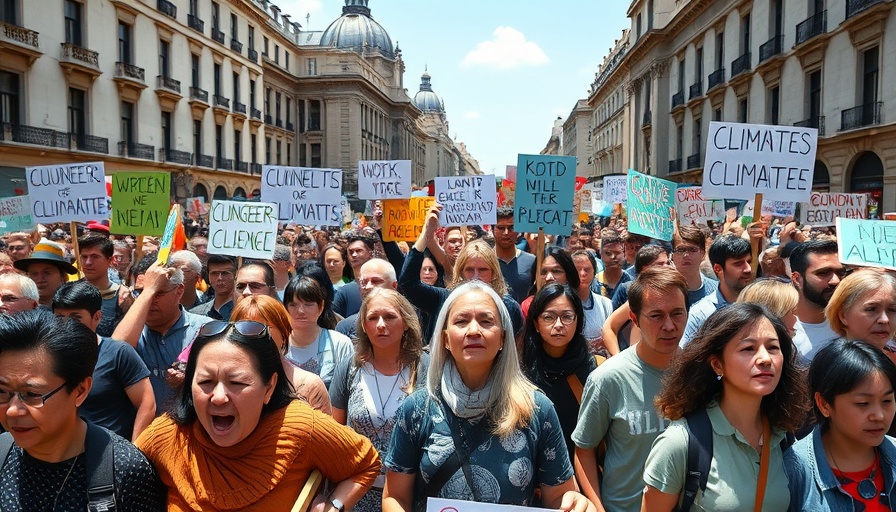
Why Climate Action Matters More Than Ever
With a staggering 89% of individuals worldwide calling for stronger climate action, it's time to address the powerful sentiment brewing across nations. This majority isn't just a statistic; it's a reflection of a collective yearning for a sustainable future. Imagine the potential of this immense support if those affected by climate change recognized they aren't alone but rather part of a significant movement that demands action from their governments. This sentiment aligns perfectly with the ethos of many professionals and eco-conscious individuals who are deeply invested in health, sustainability, and personal growth.
Breaking the Silence Around Climate Concern
Many people feel trapped in a 'spiral of silence', hesitating to voice their concerns about climate change, thinking they are part of a minority. This belief is misguided. As noted by experts like Anthony Leiserowitz from Yale, simply informing individuals that they belong to the majority can be instrumental in breaking this cycle. Climate change isn't just a global concern; it’s personal and local. Parents, like you, are worried about the planet we leave for our children, and it’s vital to understand that your voice can be a catalyst for change.
The 89 Percent Project: A Call for Unity and Action
In light of Earth Day, The Guardian has initiated the 89 Percent Project, a collaborative journalism effort aimed at amplifying the voices of this majority. It's a refreshing reminder of the true collective will to push for change. This yearlong initiative combines insights from dozens of newsrooms to spotlight climate action coverage leading up to pivotal events like the COP30 United Nations Climate Conference in Brazil this fall. By participating in this dialogue, individuals can contribute to a snowball effect that encourages more significant government actions.
Envisioning a Social Tipping Point for Climate Action
If 89% of us believe that stronger measures against climate change should be taken, we are on the brink of a social tipping point. Experts assert that breaking down barriers of perception is crucial. Activists like Kyle Pope emphasize that if the citizens' concerns aren’t met with political response, it reveals a deficit in democratic representation. This should motivate everyone—especially the younger generation, who are undeniably the future of our planet—to hold their leaders accountable and advocate for what is just.
Empowering Your Voice: What You Can Do
The crux of the matter is empowerment. Each person can play an important role in this climate movement, starting with small, conscious decisions every day: choosing sustainable products, supporting eco-friendly companies, and voting for representatives who prioritize our planet’s health. The knowledge that the majority supports you in this journey can be a monumental motivator to take action. Let's pave the way toward a sustainable future together!
An Invitation to Join the Movement
This Earth Day, let’s recognize the collective energy we can harness. By deliberately making our voices heard, we can work together to steer our governments towards proactive climate policies. Engaging in community dialogues, sharing information, and attending events like those organized by the 89 Percent Project are vital steps toward manifesting change.
 Add Row
Add Row  Add
Add 




Write A Comment